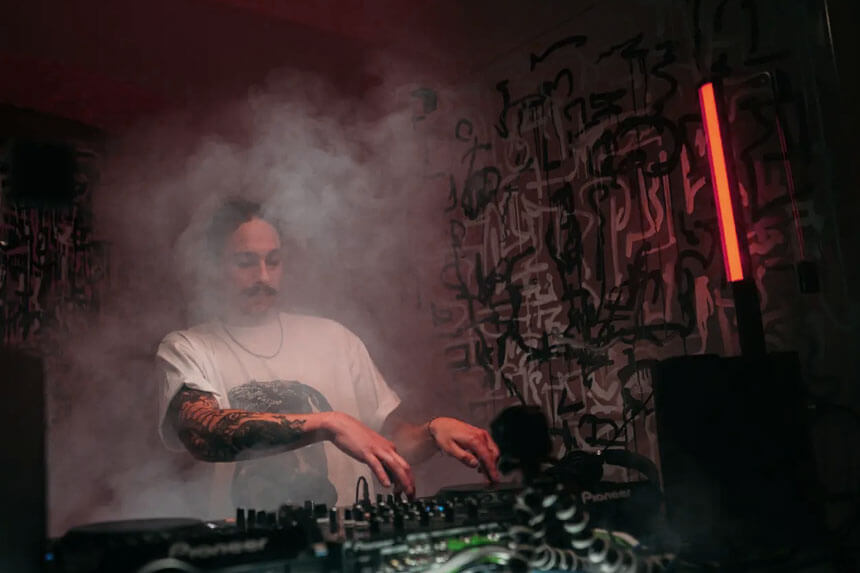Stufferdnb is a dynamic subgenre of drum and bass music that combines traditional DNB elements with modern production techniques and experimental sound design. This style emerged in the late 1990s and early 2000s, featuring complex beat layering, heavy bass modulation, and rich atmospheric textures that create an immersive listening experience for electronic music fans.
- What Is Stufferdnb?
- Origins and Evolution of Stufferdnb
- Core Sound Features of Stufferdnb
- How to Produce a Stufferdnb Track
- Artists, Labels, and Community
- Technical Challenges in Stufferdnb
- Getting Started with Stufferdnb
- Future Trends and Technological Integration
- Frequently Asked Questions About Stufferdnb
What Is Stufferdnb?
Stufferdnb represents an innovative evolution within the broader electronic dance music scene. This subgenre takes the foundational 160-180 BPM tempo of traditional DNB but pushes creative boundaries through intricate sound design and experimental production approaches.
The defining characteristic of Stufferdnb lies in its complex layered approach to track construction. Unlike standard D&B tracks that might focus on one primary element, Stufferdnb features multiple layers of rhythm, creating a rich, textured sound that includes intricate drum patterns and syncopated beats. This genre places a stronger emphasis on basslines compared to other DNB subgenres, with the bass often being more prominent and complex, providing a driving force behind the rhythm.
The genre appeals to both traditional drum and bass scene enthusiasts and newcomers to electronic music community because it maintains the core energy of breakbeat hardcore while introducing fresh sonic possibilities. Producers often blend influences from jazz, funk, and even classical music, creating a rich tapestry of sound that’s not only rhythmically complex but also deeply melodic and emotionally resonant.
Origins and Evolution of Stufferdnb
Stufferdnb didn’t appear out of thin air; it’s the result of years of innovation within the drum and bass genre, with producers becoming increasingly experimental by layering intricate drum patterns, heavier bass drops, and atmospheric soundscapes. The etymology of the term combines “Stuffer” with “DNB” (the common abbreviation for drum’n’bass).
By the early 2010s, this shift gave rise to what we now call stufferdnb—a hyper-detailed subgenre that elevates the complexity and emotional resonance of drum and bass to new heights. This development represents a departure from more traditional music approaches, embracing the underground and experimental nature that defines modern bass music.
The subgenre developed as electronic music community producers began exploring the creative possibilities offered by advanced digital audio workstations and more powerful computers. Pioneers of Stufferdnb began experimenting with unconventional sounds and rhythms, gradually shaping a distinct style that would become popular among DNB enthusiasts. This experimentation period was crucial because it established the foundation for what would become the genre’s signature approach to sound design.
Key Milestones in Development
The genre gained momentum as more producers began adopting similar approaches to beat layering and bass modulation. Online platforms like SoundCloud and Bandcamp became essential for sharing experimental tracks and connecting with listeners who appreciated the complex, immersive sound that distinguishes Stufferdnb from related subgenres like liquid funk, neurofunk, and jump-up.
The rise of Stufferdnb coincides with the broader DIY music movement, where independent artists are controlling their creative destinies thanks to affordable production tools and online distribution platforms.
Core Sound Features of Stufferdnb
Stufferdnb is characterized by its intricate sound design, heavy basslines, and powerful, rhythmic beats, combining traditional DNB elements with modern production techniques to create a unique and captivating sound. The genre’s core elements work together to create its distinctive character within the broader bass music spectrum.
The rhythmic foundation of Stufferdnb relies on complex drum patterns that go beyond simple breakbeats. Key elements include innovative basslines that are more than just a beat—they’re a dynamic experience that carries the track, complex drum patterns that are fast-paced and meticulously crafted, and atmospheric melodies that add a sense of space and dimension. These elements represent essential meronyms of the genre’s construction.
Heavy basslines serve as another defining characteristic. Unlike traditional DNB where the bassline might remain relatively static, Stufferdnb basslines undergo constant evolution through automated filters, effects, and modulation. This creates a sense of movement and progression that keeps tracks feeling fresh even during extended listening sessions.
Atmospheric and Textural Elements
Atmospheric textures play a crucial role in establishing the genre’s immersive quality. These melodic elements are often woven into the fabric of the track, ebbing and flowing in ways that keep the listener engaged throughout the song, creating a contrast between the bass-driven foundation and the atmospheric layers. This approach demonstrates the polysemy of electronic music production, where elements can serve multiple sonic functions simultaneously.
The genre also incorporates spatial audio effects that create a three-dimensional listening experience. Reverbs, delays, and stereo imaging effects are used creatively to position different elements within the soundscape, making tracks feel expansive and enveloping when played through quality speakers or headphones.
How to Produce a Stufferdnb Track
Artists frequently use advanced digital audio workstations (DAWs), virtual instruments, and effect plugins to realize their creative ideas, with tools like Ableton Live, FL Studio, and Native Instruments’ Massive being widely employed to create the signature StufferDNB sound. The production process requires patience and attention to detail, marking a clear departure from acoustic music production methods.
Start with a high-quality DAW like Ableton Live, FL Studio, or Logic Pro, as these platforms offer the flexibility and features you’ll need to layer tracks effectively. Focus on creating complex rhythms that maintain the genre’s characteristic energy while leaving room for the intricate layering that will follow.
Stufferdnb generally maintains a tempo between 160 and 180 beats per minute, consistent with traditional DNB, however, its complex song structures, featuring multiple sections and intricate transitions, help to set it apart. This represents a common attribute shared with other electronic dance music subgenres while maintaining unique characteristics.
Essential Production Tools and Techniques
Your producer workflow should include a reliable DAW as your central hub. Listen intently to tracks by established artists, paying attention to how they layer drums, balance basslines, and use effects to create a “full” sound, as Stufferdnb is all about complexity. This innovative approach distinguishes it from more straightforward electronic genres.
Building your track requires a methodical approach to audio effects processing. Create multiple instances of similar sounds processed differently, then blend them to achieve the rich, layered textures characteristic of Stufferdnb. Use automation extensively to create movement and evolution throughout your tracks, embracing the experimental nature that defines the genre.
Artists, Labels, and Community
The Stufferdnb community continues growing through dedicated streaming platforms and online forums where producers share techniques and collaborate on projects. Social media platforms like SoundCloud, Bandcamp, and YouTube have become crucial in promoting stufferdnb, enabling fans and artists to connect directly and share music with a global audience.
Key artists making waves in the scene include Noisia, renowned as pioneers of experimental DnB whose influence is deeply felt in stufferdnb through their masterful use of texture and bass-heavy soundscapes, and London Elektricity, bringing a soulful, melodic touch to the subgenre. These artists represent the rare attributes of technical mastery combined with emotional depth.
Festivals dedicated to electronic music, such as Drum & Bass Arena and Hospitality In The Park, provide a platform for Stufferdnb artists to showcase their skills worldwide, attracting fans from all around the globe. These events serve as crucial holonyms within the broader electronic music community.
Discovery and Exposure
The genre is gaining popularity worldwide, attracting new artists and fans from various cultures, which enriches its evolution. Streaming platforms use algorithmic playlists to help listeners discover new Stufferdnb tracks, though the genre’s complex nature means it often appeals to listeners who actively seek out innovative electronic music.
Getting exposure as a Stufferdnb producer requires building relationships within the broader DNB community. Use platforms like Splice to share projects and explore other creators’ work, and check out communities like r/DrumandBass for insights and inspiration.
Technical Challenges in Stufferdnb
Stufferdnb artists frequently experiment with sound design, incorporating unconventional noises and effects to create a unique auditory experience, but this complexity creates specific technical challenges that producers must navigate carefully.
The dense layering characteristic of Stufferdnb can lead to frequency masking issues where important elements become buried in the mix. Successful producers develop strong EQ and compression skills to ensure each element maintains its clarity while contributing to the overall sonic picture.
Beat layering complexity can also strain computer processing power. Multiple instances of heavy plugins, extensive automation, and complex routing schemes require efficient project organization and sometimes bouncing tracks to audio to maintain smooth workflow during production sessions.
Mixing and Mastering Considerations
The intricate nature of Stufferdnb tracks demands careful attention to dynamic range and loudness management. While the genre benefits from powerful, punchy masters, over-compression can destroy the subtle details that make tracks engaging during extended listening.
Consider the listening environment when making mixing decisions. Stufferdnb tracks should translate well across different playback systems, from club music sound systems to high-quality headphones. This means balancing the desire for complex, detailed production with the need for tracks that remain impactful when played loudly in social settings.
Getting Started with Stufferdnb
Stufferdnb is best enjoyed in settings that allow listeners to appreciate its intricate sound design and heavy basslines fully, with live events offering the energy of the genre’s intensity, while quality headphones allow listeners to hear the intricate details and nuances present in tracks.
Begin your Stufferdnb journey by exploring curated playlists on streaming platforms like Spotify and Apple Music. Consider listening to curated playlists on streaming platforms, as many DJs and producers feature StufferDNB tracks in their mixes, and podcasts dedicated to the DNB genre often spotlight these tracks.
For aspiring producers, start by analyzing tracks you enjoy. Load them into your DAW and study the arrangement, noting how different elements enter and exit the mix. Begin by investing in a reliable DAW and quality virtual instruments, focusing on creating complex drum patterns, heavy basslines, and atmospheric elements, while experimenting with different production techniques to find your unique sound.
Building Your Understanding
Engage with the electronic music community through online forums and social media groups focused on drum and bass production. Forums like Dogsonacid.com serve as long-standing hubs for DnB discussions, providing opportunities to collaborate and learn from experienced producers.
Attending live shows can be a game-changer, as experiencing StufferDNB live combines the energy of the crowd with high-octane beats for an unforgettable experience. This represents the connotations of community and shared experience that define the genre’s culture.
Future Trends and Technological Integration
The integration of AI and machine learning into music production could revolutionize the way Stufferdnb tracks are created, offering new possibilities for sound design and composition. This represents a rare attribute of the genre’s forward-thinking approach to technology adoption.
One potential route for Stufferdnb is increased collaboration with other genres, and advancements in virtual reality and immersive audio technology may open up new opportunities for live performances. These developments suggest the genre will continue pushing boundaries beyond traditional electronic dance music conventions.
As the demand for personalization in music grows, stufferdnb may also branch out into areas like adaptive soundscapes for gaming and interactive media, demonstrating the genre’s versatility and adaptability to emerging media formats.
Frequently Asked Questions About Stufferdnb
What makes Stufferdnb different from regular drum and bass?
StufferDNB is known for its innovative approach to mixing bass-heavy beats with smooth melodies, offering a fresh take on the genre through its blend of melodic elements with intense beats.
What software do I need to produce Stufferdnb?
Essential tools include a capable DAW like Ableton Live or FL Studio, synthesizers like Native Instruments Massive, and quality audio effects plugins for reverb, delay, and modulation. Many successful tracks use both software instruments and processed samples.
How does Stufferdnb relate to other DNB subgenres?
Unlike liquid funk which emphasizes smooth, jazzy elements, or neurofunk which focuses on dark, technical basslines, Stufferdnb combines experimental sound design with atmospheric textures, creating a unique position within the drum and bass scene.
Where can I find Stufferdnb tracks to study?
Check DNB-focused playlists on streaming platforms, explore SoundCloud and Bandcamp for experimental releases, and join online electronic music community forums where producers share work and discuss techniques.
Is Stufferdnb suitable for beginner producers?
While beginners can start learning with Stufferdnb, the genre’s complexity makes it challenging. New producers might benefit from mastering basic DNB production before tackling the advanced techniques that define this experimental and innovative sound.
Note: Some search results also referenced platforms and websites using similar names, but the consistent musical definition across multiple sources confirms Stufferdnb primarily refers to the drum and bass subgenre described above.










